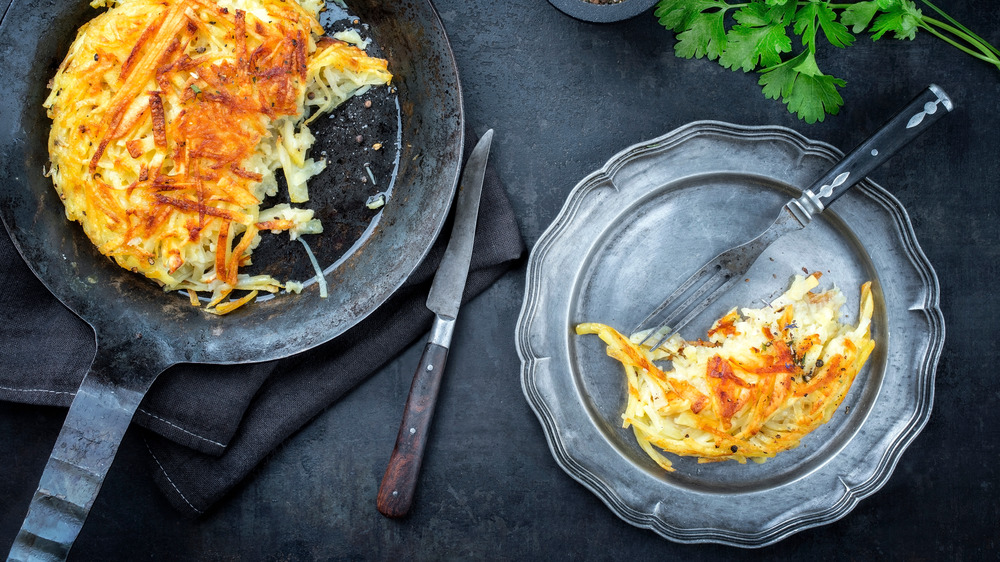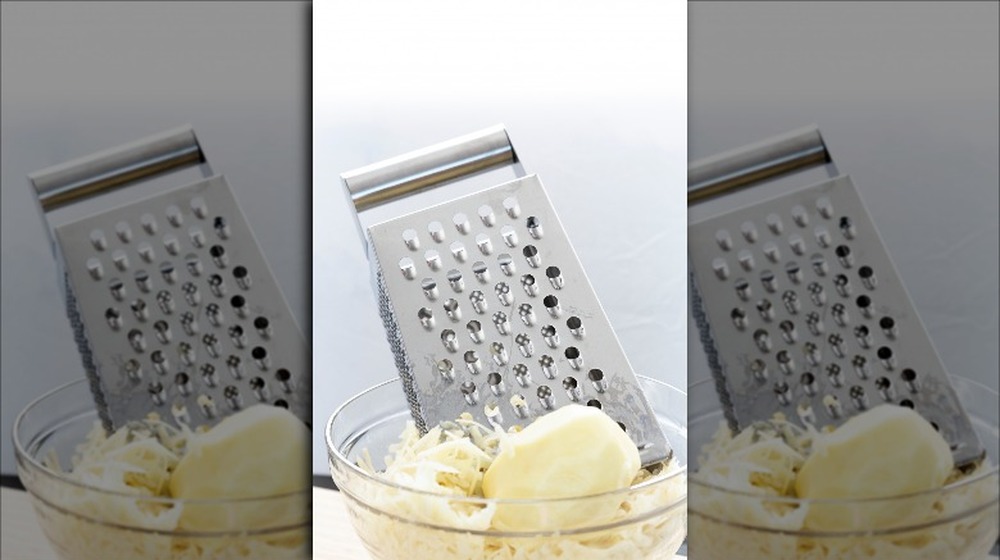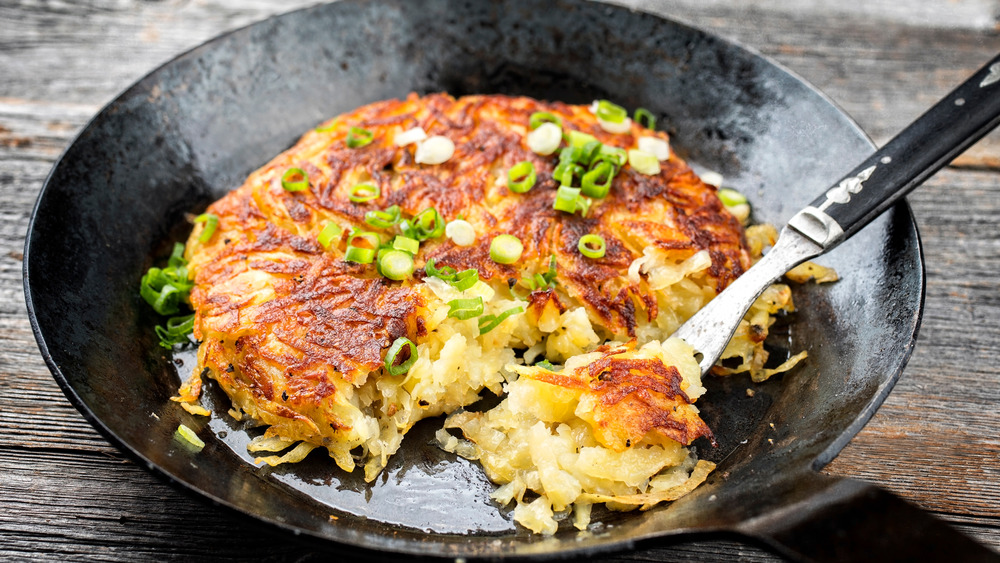You've Been Making Hash Browns Wrong All This Time
If you regularly succumb to soggy, greasy, half-raw piles of shredded spuds instead of crispy, golden brown potato shreds, take note: There are a few simple tricks that will guarantee tender, perfectly caramelized hash browns every time.
The term "hash browns" is derived from the French word "hacher", which means to hack or chop, and the full name of this beloved breakfast staple is "hashed brown potatoes," or "hashed browned potatoes," which basically means chopped potatoes that are cooked until brown (via Goody Feed). We've been devouring these spuds-done-right since the late 1800s, and not just in diners, but even in some of New York City's finest hotels (via Barrypopik.com).
While we're not talking about making Beef Wellington here, it seems you can't just shred potatoes and fry them in a pan, hoping you'll achieve that restaurant-quality hash brown experience. There are a few critical culinary steps you need to employ to ensure you'll end up with potatoes that are golden and crisp on the outside and tender on the inside.
Not all spuds are created equal, especially when it comes to hash browns
Before all else, choose the right potatoes. Low-moisture, starchy Russets (also known as Idaho and baking potatoes) are the preferred tuber for hash browns because they cook up crispy, not soggy (via The Salty Marshmallow). And while a starchy potato is desirable, removing that excess starch is critical for crispy hash browns, according to All Recipes. Exactly how do you remove starch from a spud? A couple of cold baths should do it.
All Recipes recommends shredding the potatoes with a box grater or food processor and then immediately plunging the shreds in cold water. The icy bath not only prevents oxidation (which turns the spuds black), it removes excess starch, which is evidenced by the cloudy water. Drain the potatoes through a colander and then give them another cold water bath to remove more starch. If necessary, repeat the process until the water is clear.
Now it's time to dry your spuds. Bon Appetit asserts that the difference between crispy and soggy hash browns is the drying step. Squeeze the potatoes to remove the water; toss them around, and then squeeze again. Squeeze a third time if you have to, it's worth it.
Leave your potatoes alone
Once the potatoes are rinsed and thoroughly dried, they're ready to season and cook. When it comes to flavoring, Favorite Family Recipes states that salt and pepper are the obvious choices, but seasoned salt, garlic powder, onion powder, paprika, and cayenne pepper are also great additions. And since potatoes are bland by nature, don't be shy with the shaker.
When you're ready to frizzle the spuds, Better Homes & Gardens suggests cooking hash browns in a large nonstick skillet that's been greased with a blend of butter and oil. All Recipes adds that bacon fat, clarified butter, and ghee work equally well.
And while the temptation will be there, once the tubers hit the pan, spread them out and leave them alone. Do not disturb until they are golden brown and crispy on the bottom and almost cooked through to the top; which could take about five to eight minutes (via New York Times). Simply Recipes suggests peaking underneath occasionally, and when the bottom is golden brown, it's time to flip.
Clearly not rocket science, but a few simple steps will ensure perfectly fluffy and crisp hash browns every time.


